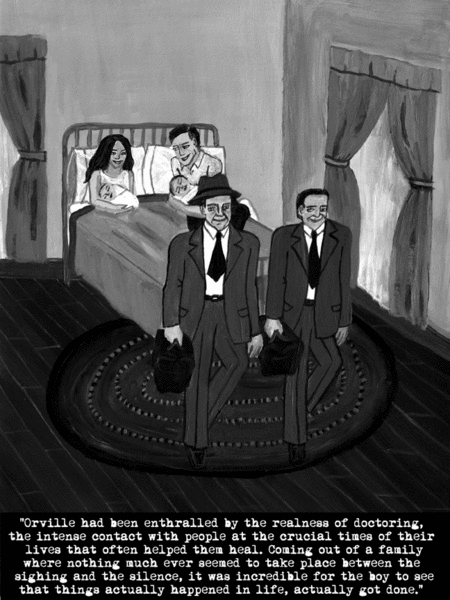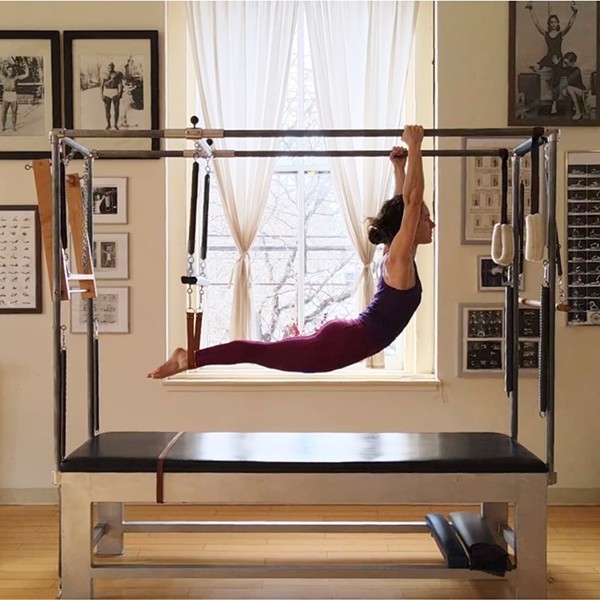It is with three decades experience as a doctor and a penchant for storytelling that Stephen Bergman, MD, PhD (pen name, Samuel Shem), writes with wit and heart about both sides of the doctor/patient relationship. His highly acclaimed first book, The House of God (1978), continues to sell beyond the two-million mark and is today required reading at many medical schools worldwide because of its authentic depiction of hospital internship, the grueling year medical students must endure as they transition from textbooks to the real world of doctoring. Specializing in psychiatry, Dr. Bergman lectures widely at colleges and medical schools, and has also written the novels Mount Misery (sequel to The House of God) and Fine, the nonfiction book We Have to Talk: Healing Dialogues between Women and Men, written with wife Janet Surrey and also penned with Surrey the off-Broadway play “Bill W. and Dr. Bob,” the story of the founding of Alcoholics Anonymous (available on DVD).
I spoke with Dr. Bergman by phone, shortly after he launched his book tour for The Spirit of the Place (Kent State University Press, 2008) at the Hudson Opera House. Why Hudson? It’s the book’s setting (renamed “Columbia”), in the mid-1980s. Bergman grew up there, and “knows Hudson and all of Columbia County, inside and out,” he said. The history and details that come to life in the narrative are delightful whether you know Hudson or not. For instance, Bergman mused, “I was taught in school that Hudson was once a whaling port because of the river. I came back one time [after moving away] and Hudson had grabbed on to the whale as a symbol—it’s on their street signs, it’s everywhere. I asked a lot of people about it, but nobody knew why. The town was founded as a Quaker utopia, but later became known for its whorehouses. That’s very accurate. When those got shut down in 1950, the town kind of died. But now there’s a fight between the natives and the New Yorkers. It’s still an open question who’s going to win that one.”
I asked Dr. Bergman to comment on how The Spirit of the Place draws from his unique perspective as a doctor who for years has experienced and contemplated the pitfalls of our medical system.
What are you showing us in the relationship between the young doctor who begrudgingly returns to this small town and the older doctor who has been the town’s doctor for ages?
The Spirit of the Place is about a doctor [Orville] who’s been running around the world, doing good work, actually, working for Doctors Without Borders, and he’s called home by his mother’s death to a small town called Columbia, based on Hudson, New York. And then, through circumstance, he becomes the doctor for this town. He really disliked the place when he was growing up and couldn’t wait to get out of it. It was a very brutal, anti-Semitic experience for him. I’m not saying all of this is word-for-word my experience—but I grew up in Hudson; it was my home from when I was 2 until I was 18, when I left. So Orville doesn’t really want to stay there, but through the time he spends there—the wild, funny, rich experience—it works on him, and changes him for the better. Through his doctoring this town, it kind of doctors him. It heals him.
The Spirit of the Place contrasts medical practice today and the good old time doctors, personified in the book by Bill Starbuck. He’s based on a wonderful doctor from Hudson, Harold Levine. He was a kind old country doctor. He never had an assistant. You just came in and waited your turn. The waiting room was totally packed. One time he tried to get an assistant to schedule appointments, and people got really pissed off. He was one of these doctors who knew everybody. He knew patients’ families and social histories. Starbuck is the narrator’s [Orville’s] mentor, and got Orville through his adolescence; he let Orville visit patients with him and help out. Levine had that role with me. He was a good doctor.
In the `80s [the timeframe for The Spirit of the Place] there were a lot of advances that allowed country doctors to treat people fairly well. There were antibiotics, surgery, they knew how to deliver babies—when was the last time anybody went to a general practitioner for a delivery? The doctors then knew the holistic picture, to use a modern word. And they could take as much time as they wanted with a patient. A lot of people paid in cash, and if they couldn’t get payment, by and large, a doctor would treat for free—or take something, like a chicken, as payment. Medicine wasn’t that commercialized yet.
That’s changed dramatically. What do you think has happened?
The Spirit of the Place is looking back to 1983, to ‘84; House of God was 10 years earlier. These were significant periods in American medicine. When I graduated from medical school in 1973, everybody was excited about healthcare. And because we were products of the 60s, because we had been active in the civil rights movement and the movement to stop the Vietnam war, which were successful, then when we saw things in the medical system that were inhumane, we tried to stick together and change that. For example, when reps from drug companies came along and said, “Here, here are your free black bags and stethoscopes,” almost the whole class said, “We’re not taking those! You’re big pharma, and you’re just trying to control us!” Now it’s “We’ll take two!”
What I was doing in the book, unconsciously to some degree, is to parallel the transition from the 60s [to today]. Lyndon Johnson is the one who put in the community mental health movement, trying to get better medical care for people, better welfare care—it was a tremendous movement—even Nixon was kind of part of it. What happened was, in reaction to the sixties, the politics all changed. The big, big change was Ronald Reagan, because what he did, not so subtlety, was start the movement toward privatization—removing the safety net from poor and underprivileged people. He didn’t care about mental health centers, he didn’t care about health care. He cared about insurance companies and corporations.
So I think that in reaction to the social movements of the sixties, America got scared and found their hero in Ronald Reagan. He’s the one who said, “It’s morning in America!” It was a horrible lie. It was a terrible situation. He was assassinating leaders in Panama and Ecuador, and secretly doing the Iran Contra thing, and people were afraid of the Soviet Union.
So to jump forward, now the economy is a disaster, the war is a disaster. And medical care is a disaster, because there’s no money for it and because, I believe, it continues to be a private insurance system instead of a public one that is the responsibility of the government. Healthcare is definitely worse now, in lots of ways. It’s the worst it’s been in my lifetime. There are almost 50 million uninsured, about a sixth of the population. It’s never been like that. And your chance of having a mistake made in your hospital stay is up around 40 or 50 percent now.
That’s very disturbing. Why is that?
Because the doctors and the staff don’t know the patients, patients are in for shorter stays so there is not a real ability to make a connection [between doctor and patient], and the financial crunch is such that it impinges on treatment. In inpatient treatment, doctors are in a hurry, nursing pay is down; in outpatient, doctors are rewarded for providing less care, because less care is less expensive.
Plus, there is a tremendous crisis in getting primary care physicians. It’s almost impossible if you’re a new patient. It just doesn’t pay [to be a primary care physician], it’s hard work, there’s the threat of lawsuits—nobody is going into it anymore. In my class, in 1973 at the Harvard Medical School, probably 25 or 30 out of a hundred went into primary care or family medicine—we loved it. Now, just the other day, I talked to some people at the Harvard graduation, and something like two go into primary care. Two! Now they specialize in something like radiology—they make a fortune, set their own hours—or like cardiology, general surgery, even dermatology, things like that. So, medicine has certainly changed.
But—and there is a big “but” here—The House of God sells more copies now than ever, it’s all over the world, almost every doctor knows about it or has read it.
Why do you think that is?
Because it is about elemental things. It’s very specifically set in 1973 to ‘74 in an urban hospital in America, but it’s relevant to people’s training as doctors today. They face the same problems. The basic problem is, how do you make a good connection with a patient? As I get older, I realize the most important thing in medicine that really helps people, either directly through giving them some hope or understanding, or indirectly by making it possible to do better medication or surgery because they like you, is the quality of the connection with the doctor. I would say the quality of the connection between the doctor and the patient is absolutely the most important thing in medicine. The rest is technical skill and judgment and all that. But if you have a good connection, and you know how to listen, the patient will tell you what’s wrong with them.
When you talk about the quality of relationship with one’s doctor being very important, my reaction is, “What relationship?”
Right. Now we use all these tests. Doctors have eight minutes a visit or something like that. What chance do they have? Part of the reason so many tests are being done, frankly, is the threat of lawsuits. It never used to be that way. When I grew up, nobody would sue a doctor. And, of course, the main variant in whether a person sues a doctor after a bad result is the quality of their connection with the doctor. Studies have shown that if they like the doctor, they’re not going to sue.
I know from your other works and your website that you like to focus not just on what’s wrong, but also on how things can get better. Do you see any hope for medicine today?
Yes, I do. Go spend time with medical students. They’re incredible people. They’re different than when I was in medical school. They’ve been everywhere, they’ve done everything…they’re very hopeful. Another reason to be hopeful is that over 50 percent of medical school graduates are women, and women are the carriers of connection in our culture, who do the relational work, mostly, and are valued for doing that work, whereas men are not as valued for that.
Another thing that has gotten better is that what used to be called “alternative” treatments are now accepted, for example, Alcoholics Anonymous, and 12 step programs. What the founders of AA, Bill Wilson and Dr. Robert Smith, discovered in 1935 was that telling your story to another drunk could keep you sober. Mutual connection heals people. Not just connection, but mutual connection. They were pioneers of the idea in medicine—now it’s a normal and obvious treatment, but nobody gives them credit for it—that same-disease people can offer support and healing to each other.
A third hope in medicine, as Bill Wilson and Dr. Bob said explicitly in the Big Book of AA, is that alcoholism is a physical, emotional, and spiritual disease, which was the start of the holistic movement—where you don’t treat just physical symptoms. And that’s engrained in medicine now. There is a lot of attention paid to the psychological aspect of disease. There is a lot of that in alternative treatments, like social work, and clergy, and really good doctors who do that, in spite of it being hard.
The last thing is, we’ve got to get rid of insurance companies. Medical care in every other Western industrialized county is better. We’re the only one where the government doesn’t take care of it as a priority. It’s a no-brainer that the only way medicine is going to get better is to have a government-run single-payer system. But if we’re spending half our money on a defense budget, we don’t have the money for this.
Some people are afraid of the single-payer model as being socialized medicine.
People say, “Oh, socialized medicine!” That’s the [pejorative] buzz word. But I recently had a wonderful experience with the single-payer model. My father had lung cancer, and after a while, his doctor said we had better get hospice care. [The doctor arranged that] and the next day my father got two kinds of oxygen tanks, a terrific new wheelchair, a great bed, a nurse on call giving medications in his apartment. How much does it cost? Zero. It was from Medicare, and they were terrific, motivated caregivers.
So, the hope is that there will be a universal, single-payer system. Doctors want it. They hate the private insurance system because they have to deal with insurance companies. You’ve got a third of the budget for medical care in the country going to administrative costs of insurance companies—that’s like $300 billion dollars a year just for paperwork! None of the presidential candidates would dare talk about that. They are still talking about using insurance companies. The insurance lobby is incredibly powerful. Nobody’s crossing them. But you’ve got to change the system.

















